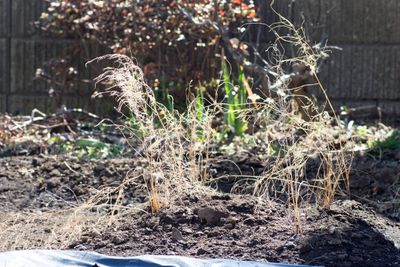Does Asparagus Need Winter Protection?
In mild climates, the root crowns of asparagus need no special winter care, but in cooler regions, winterizing the asparagus bed is a must. Prepping asparagus beds for winter will protect the roots from the cold and encourage the plants to go dormant, allowing the plant to rest before its next growth phase in the spring.
Overwintering Asparagus Plants
In the fall, the leaves of asparagus begin to yellow and die back naturally. At this juncture, cut the brown fronds from the plant at the base. If you live in a warmer climate, the asparagus may not die back completely. Cut the spear in the late fall anyway. This forces the plant to go into dormancy, a necessary resting period before it begins to actively grow and produce again. Also, if you live in a milder climate, there is no need for further asparagus winter care, but those in colder regions need to begin prepping asparagus for winter. If you’re feeling lucky or lazy, you can choose to pray for enough snow cover to protect the crowns and leave well enough alone. If you don’t think it’s a good day to buy a lottery ticket, it’s better to perform some minor winter prep. Once the fronds have been cut back, cease watering the asparagus entirely. The idea when winterizing asparagus beds is to protect the crowns from cold injury. Spread 4 to 6 inches (10-15 cm.) of mulch such as straw, wood chips, or other organic materials over the crowns. The downside of mulching the bed is that it will slow down the emergence of the spears in the spring, but this is a small price to pay to protect the bed. You can remove the old mulch in the spring as soon as the shoots begin to emerge. Then either compost or dispose of the mulch since it can harbor fungal disease spores.
